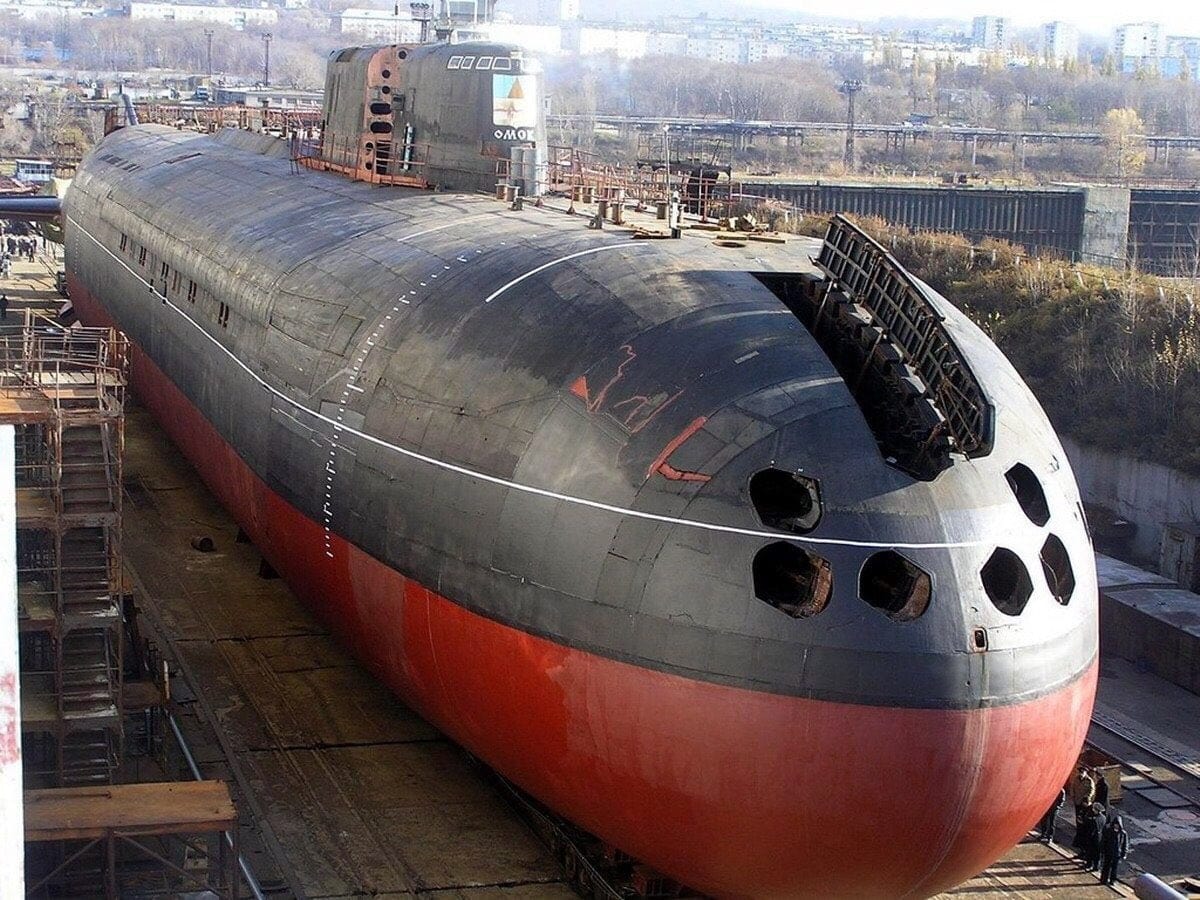America’s near-peer adversaries have set very different courses when it comes to naval development. While China now has the largest navy in the world and is focused on aircraft carriers as well as other surface combatants; Russia is taking a page from the Cold War playbook and like its Soviet predecessor, is concentrating its true strength underwater. Russia currently has a submarine force of around 59 boats that include a dozen nuclear-powered ballistic-missiles submarines (SSBNs) and nine nuclear-powered cruise missile submarines (SSGNs).
Russia’s ‘Underwater Aircraft Carrier’ for UUVs Is Coming
A source in the Russian shipbuilding industry told state media that its newest sub has successfully completed its first test deployment at sea, and the vessel is set to be handed over later this year. According to a report from Tass published Monday, the Project 09852 special-purpose nuclear-powered submarine Belgorod (K-329) has returned from its first sea deployment, which is part of the shipbuilder’s sea trials.
The boat, which is a modified Oscar II class (NATO designation), was originally laid down as a Project 949A cruise-missile submarine but was modified during its construction to operate unmanned underwater vehicles (UUVs).
While construction was suspended, and only resumed at a low rate of progress due to chronic under-funding, Belgorod will be the first submarine to utilize the “Poseidon” Status-6 Oceanic Multipurpose System (NATO reporting name: Kanyon) – an autonomous, nuclear-powered, and nuclear-armed unmanned underwater vehicle that was developed by the Rubin Design Bureau. The Poseidon is capable of delivering both conventional and nuclear payloads.
Sea Trials
The press service of the Sevmash Shipyard has not confirmed that Belgorod completed the tests, but a source told Tass, “On July 24 the nuclear-powered submarine Belgorod returned from its first deployment to the White Sea for shipbuilders’ sea trials. The second deployment to the sea is scheduled for coming days.”
It was previously reported that the Belgorod special-purpose sub would switch over to state tests after the shipbuilders’ sea trials were over, while the submarine is set to be handed over to Russia’s Navy by the end of this year. A source close to the Russian Defense Ministry also told state media that the nuclear-powered submarine Belgorod would operate in the Pacific Ocean after the completion of state trials and its delivery to the Russian Navy.
Sizable Boat With Twin Roles
The Project 09852 nuclear-powered submarine Belgorod, the first carrier of Poseidon nuclear-armed underwater drones, was floated out on April 23, 2019. As Naval News reported, this is the largest submarine to be built in three decades and is second in size to the Cold War era Typhoon-class.
Belgorod features an enlarged Oscar-II class submarine hull that is estimated to be 584 feet in length and about 49 feet across. With a displacement of more than 19,000 tons, Belgorod will be larger in every respect than the largest western subs, the U.S. Navy’s Ohio-class.
The special-purpose nuclear-powered submarine will serve in two roles: the first to host the deep-diving midget subs, which could be employed in covert activities, such as cutting undersea Internet cables; and in a second capacity as a nuclear strike/deterrence submarine armed with the Poseidon, autonomous vehicles.
Peter Suciu is a Michigan-based writer who has contributed to more than four dozen magazines, newspapers, and websites. He regularly writes about military small arms and is the author of several books on military headgear including A Gallery of Military Headdress, which is available on Amazon.com.

